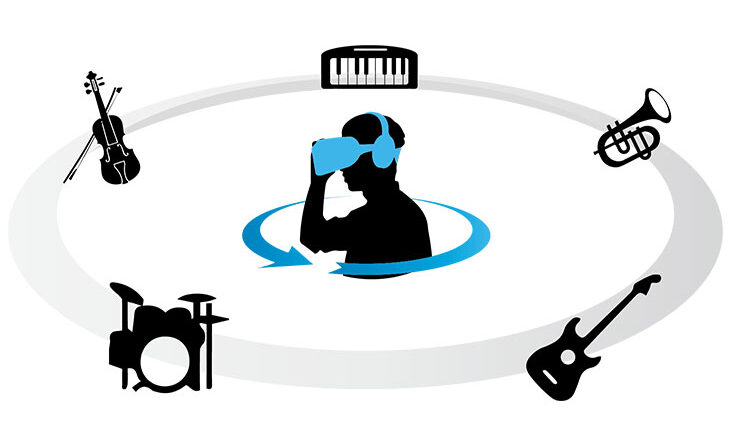The Benefits of Using 3D Spatial Audio in Education and Training
3D spatial audio is an emerging technology that can enhance the audio experience of gaming, movies, music, and more. It also helps users to enjoy immersive virtual reality experiences. This immersive technology can transform how people learn, communicate and engage with their surroundings.
Increased Engagement
Table of Contents
Spatial audio is a technology that allows for more immersive experiences in video games, music, and other forms of media. It can create an emotional response from the audience and improve learning and performance.
In the case of virtual reality, it is often used to help people become completely immersed in a story or environment. Using spatial audio in VR can help people feel like they are in the same space as the characters, allowing them to experience the story or environment in a way they would not otherwise be able to. However, this can be very difficult for some people. For example, some people with hearing impairments may find it hard to hear the sounds generated in a VR experience. This can be a problem when trying to engage them with a story or environment, as they may need help hearing certain sounds important to the plot.
Fortunately, there are ways to overcome this problem. One of the best ways is to use 3D spatial audio. Spatial audio generates an extra layer of sound in a digital 3D space that surrounds the listener. This extra layer of sound can be a combination of music, dialog, and even special effects that make the audience feel as if they are in the same location as the audio.
This technology is especially effective on mobile devices and multi-speaker systems commonly used to playback movies and music streaming services. This type of audio can be particularly beneficial for people with adult Attention Deficit Disorder (ADHD) as it can increase dopamine levels in the brain, positively impacting attention. As a result, educational institutions need to incorporate 3D spatial audio support into their teaching methods. This can be done by using virtual reality simulations that allow students to learn in a more immersive environment and by using interactive video content that can help engage students.
Enhanced Learning
Spatial audio (also known as 3D audio or immersive audio) is a way to create a more realistic listening experience. It considers your height and head movement to ensure you hear sounds as they would in real life.
A recent study found that spatial audio can help autistic participants reduce anxiety associated with aversive environmental sounds. The research focused on a virtual reality (VR) exposure game.
Auditory hypersensitivities, or an aversive response to common sound stimuli in the environment, are a major concern for people with an autism spectrum disorder. This can lead to various behaviors, including self-regulatory fear responses and avoidance behaviors. It has also been shown that spatial audio can enhance engagement during education and training. This is because it makes it easier for students to focus on the main speaker in meetings and conferences. It can also make music streaming more immersive by letting listeners hear more details in the audio. As a result, there are many opportunities to apply spatial audio in education and training. This includes enhancing live casting, digital learning, and training and making video calls more engaging by enabling participants to see and hear each other in 3D space.
Improved Performance
Spatial audio is a type of augmented reality that enhances the experience of listening to music, movies, or TV shows. It can be used in various applications, from gaming to healthcare.
Unlike traditional stereo audio, which reflects sounds from multiple directions, spatial audio puts them in the same place and uses positioning data to make them seem more realistic. To do this, filters are applied to the signals that determine where the sounds should be placed in the space. This positioning enables you to hear the sound of objects moving in your environment, and it’s this ability to place the sound wherever you want it that makes spatial audio so immersive. You can even use spatial audio to help you navigate through a 3D environment in a virtual world. In addition to creating a more immersive experience, spatial audio can also improve your hearing. This is because it lets you hear things more clearly than with standard stereo audio. It’s imperative to have hearing protection in places with much ambient noise, like in an office or a train station. The benefits of spatial audio are endless, and it’s a great way to increase the quality of your audio experience. If you’re a content producer or developer, it’s worth considering spatial audio as an option for your next project, as it can significantly improve the overall quality of your content.
Increased Retention
Spatial audio is a way to make your music, and movies sound like they’re coming from all around you, as opposed to just from the left and right speakers. It can also be used in video games. It’s a fairly new technology and isn’t yet available on all devices, but it’s becoming increasingly popular. Many companies have created a range of spatial audio formats. These can be played through a regular set of headphones or speakers, but you’ll need a pair of high-quality headphones that support spatial audio to get the full effect.
This has a lot of implications for education and training because it can be used to create immersive experiences that will impact how well students learn and retain information. Studies have shown that spatial audio can lead to more excellent retention rates than standard stereo or mono. In addition, it’s a great tool for creating hyper-realistic immersive experiences that are better at engaging patients and trainees. It’s a handy feature for VR medical training and gaming because it allows users to hear their surroundings as though they were there.




